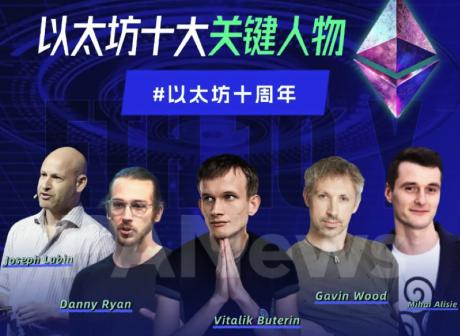Author: SuhailKakar
Translated by: Blockchain in Plain Language

Everyone is building the wrong crypto applications, believing that the future of cryptocurrency is social, DeFi, or gaming. They're wrong. The real revolution is invisible. The killer app of cryptocurrency won't announce itself with a flashy logo or Token. It has silently integrated into daily life, becoming an invisible underlying technology.
This is exactly how it should be.
Chasing the Wrong Targets
For years, crypto founders have been obsessed with "moving existing products onto the blockchain", with disappointing results.
Social? No One Wants to Rebuild the Social Graph
How many crypto versions of Twitter have we seen? Some have raised hundreds of millions of dollars, but most are ghost towns compared to the platforms they try to replace. The brutal truth is that no one wants to rebuild the social graph from scratch. Your friends aren't on crypto Twitter because their friends aren't either. It's the ultimate chicken-and-egg problem. Even with Token incentives, users will ultimately return to platforms where their real social connections exist.
Finance? Still Trapped in Fiat On-Ramp Hell
DeFi promises to revolutionize finance, but most users are still stuck in a terrible experience between traditional banks and cryptocurrency. KYC forms, bank transfers taking days, withdrawal limits, identity verification selfies... it's a nightmare. Ordinary people don't care about self-custody enough to endure these troubles. They just want money to work normally. Currently, despite the flaws of traditional finance, the experience is still smoother for most people.
Gaming? Retention Data Tells a Sad Story
"Play-to-earn" games were considered a breakthrough for crypto adoption, but created an economy where no one plays for fun. Initially attracting massive attention, players subsequently churned heavily. It proved that when games are designed around earning money rather than enjoyment, they only attract mercenary "hired guns" instead of loyal players. Once better opportunities emerge elsewhere, these players will leave.
An Invisible Revolution is Happening
While everyone focuses on these high-profile failures, something more interesting is happening: cryptocurrency is slowly "disappearing". And this is a good thing.
Technology Craves Invisibility
Think about the internet protocols supporting your browsing experience. Do you care about TCP/IP, HTTP, or DNS? Of course not. Because they are invisible, and that's precisely why they work effectively. Payments are the same. Early e-commerce online payment processes were complex, now it's just one-click, or even zero-click. The best payment experience is one you don't notice.
Cryptocurrency is following the same path. Every major adoption wave stems from abstracting away complexity:
- Smart contracts abstracted the need to build blockchains
- DeFi abstracted traditional financial intermediaries
- Non-Fungible Tokens abstracted the technical details of digital ownership
The next wave? Abstracting away cryptocurrency itself.
Cognitive Load Problem
Current crypto applications demand too much from users:
- Understanding wallets and private keys
- Managing Token gas fees
- Navigating different chains and bridges
- Constantly worrying about security and scams
It's exhausting and unnecessary. Breakthroughs will come from applications silently handling all complexity behind the scenes, letting users simply... use the app. No wallet setup, no gas fees, no chain switching, no seed phrases.
Real-World Examples Already Exist
Telegram/TON: Messaging First, Crypto Second
Telegram didn't launch as a "crypto application", but a messaging app that gradually seamlessly integrated crypto features, allowing hundreds of millions of users to interact with blockchain unknowingly. Their mini-apps and payment bots handle all complexity. Users only see "send funds" or "buy stickers". Wallets exist as a feature, not an independent product requiring education and guidance.
Over 200 million wallets have been created, most belonging to people who would never download a "crypto wallet". Via @tacbuild, you can bring all EVM applications to Telegram and TON.
Stablecoin Experience Similar to Stripe
Companies like Stripe and Circle are building payment infrastructure allowing merchants to accept crypto payments without understanding cryptocurrency. Merchants receive dollars, the infrastructure handles all blockchain transactions, and customers get a seamless checkout experience. This is identical to Stripe's strategy of simplifying credit card processing, just applied to cryptocurrency. Technology becomes invisible infrastructure, not a visible consumer product.
Embedded Finance and Crypto Rails
Some of the most exciting developments are happening in traditional financial applications using blockchain in the background:
- Banking apps using stablecoins for instant settlement
- Remittance services using cryptocurrency for cross-border transfers
- Investment products accessing DeFi yields through traditional interfaces
Users get better rates, faster transfers, and more features—without ever hearing the word "blockchain".
The Future is Invisible
I boldly predict: The first crypto application with a billion users won't mention "crypto" in its marketing. Users won't know or care about blockchain's involvement. They'll only know this app solves their problems better than alternatives.
Insights for Builders
If you're building a product in crypto, you need a fundamental mindset shift:
- Stop trying to convert users to a "crypto lifestyle"
- Stop expecting users to learn new terminology and concepts
- Stop designing products that look like "crypto apps"
Instead:
- Find real user problems blockchain can solve
- Abstract away all crypto complexity
- Make the experience feel familiar and intuitive
- Focus on user benefits, not technology
Invisible Competitive Advantage
The best crypto applications won't say "crypto". They'll say:
- "Send funds instantly, anywhere"
- "Earn 5% on your savings"
- "Permanently own your digital purchases"
- "Control your online identity"
They'll compete with mainstream products through user experience, not ideology. They'll win because blockchain can indeed build better products—as long as the technology doesn't get in the way.
Ultimate Paradox
The most beautiful irony is that cryptocurrency's greatest success will occur when people stop talking about cryptocurrency. When it becomes the invisible infrastructure supporting experiences people truly want.
The killer app isn't social, isn't finance, and isn't gaming.
It will be invisible.
The sooner builders accept this reality, the faster blockchain technology can fulfill its promise of changing how the internet works—not by making users care about blockchain, but by improving their digital lives in ways they don't even perceive.
The revolution won't be tokenized. It will be invisible.
Article link: https://www.hellobtc.com/kp/du/07/5989.html
Source: https://x.com/SuhailKakar/status/1948019003810849077







